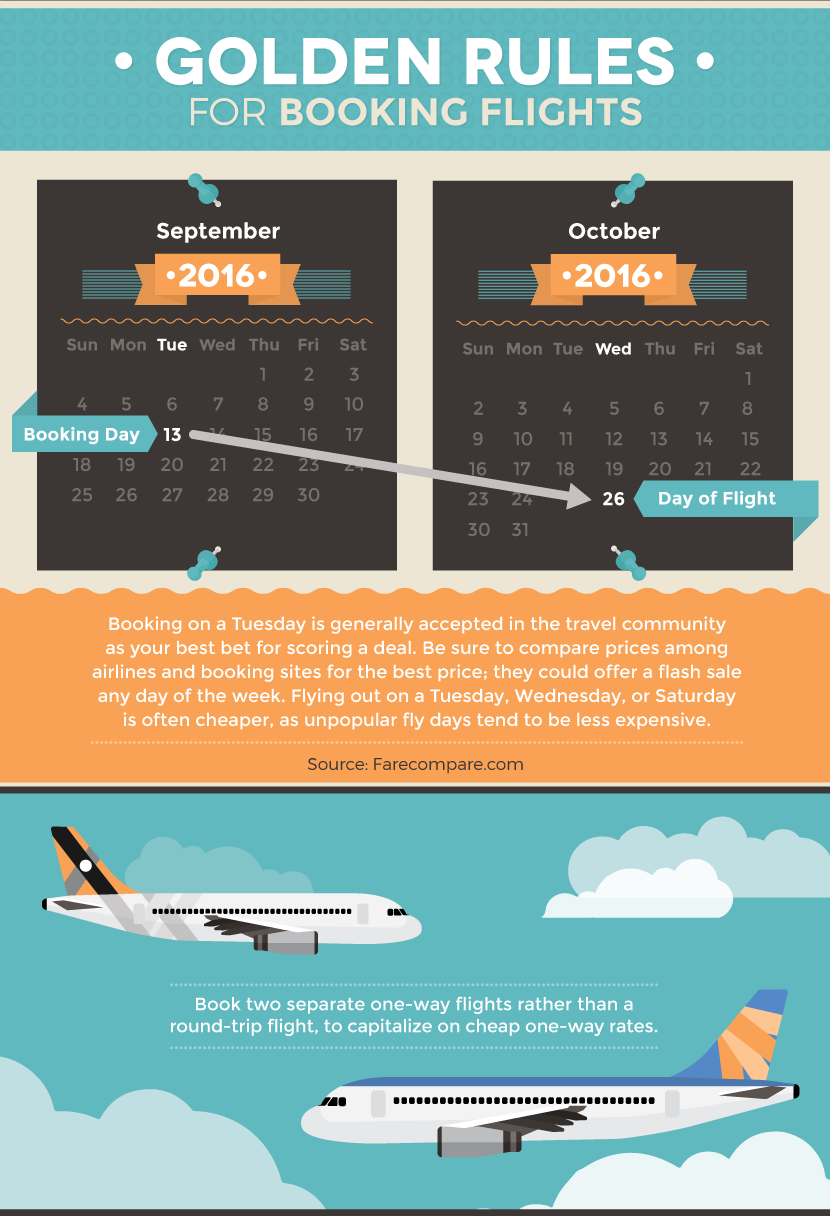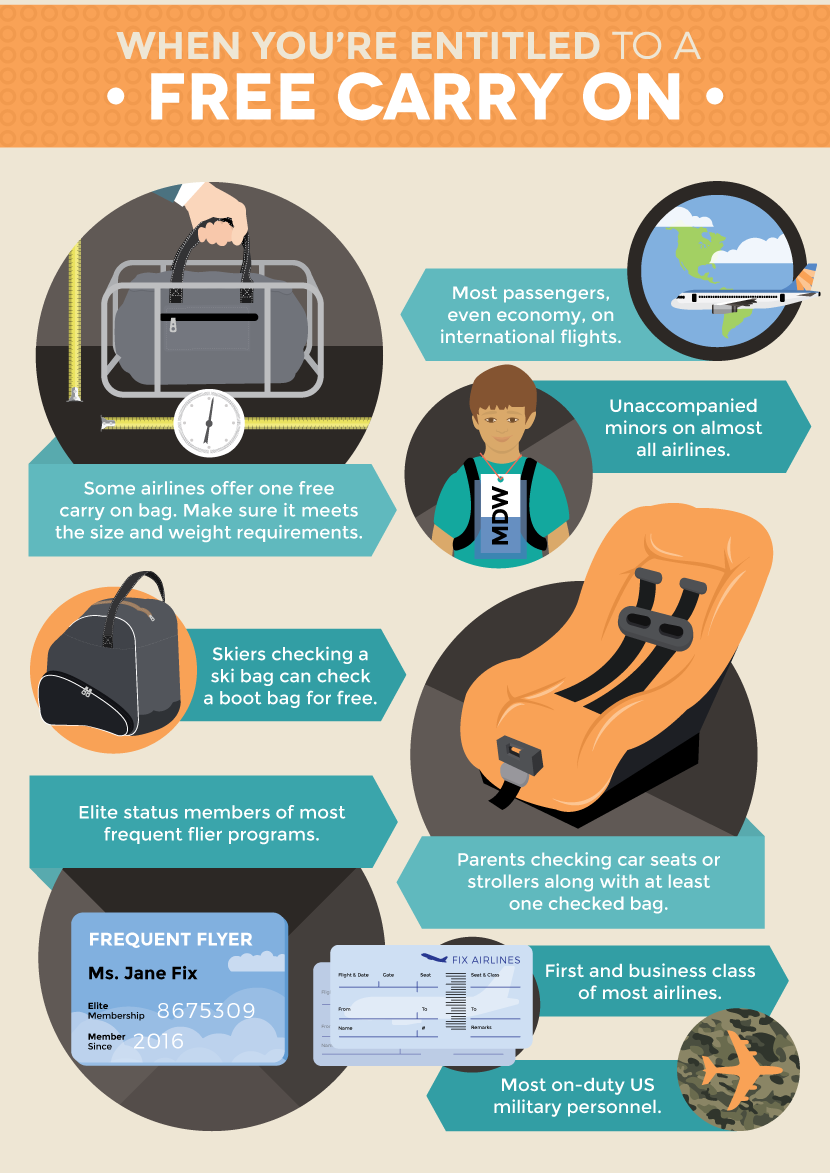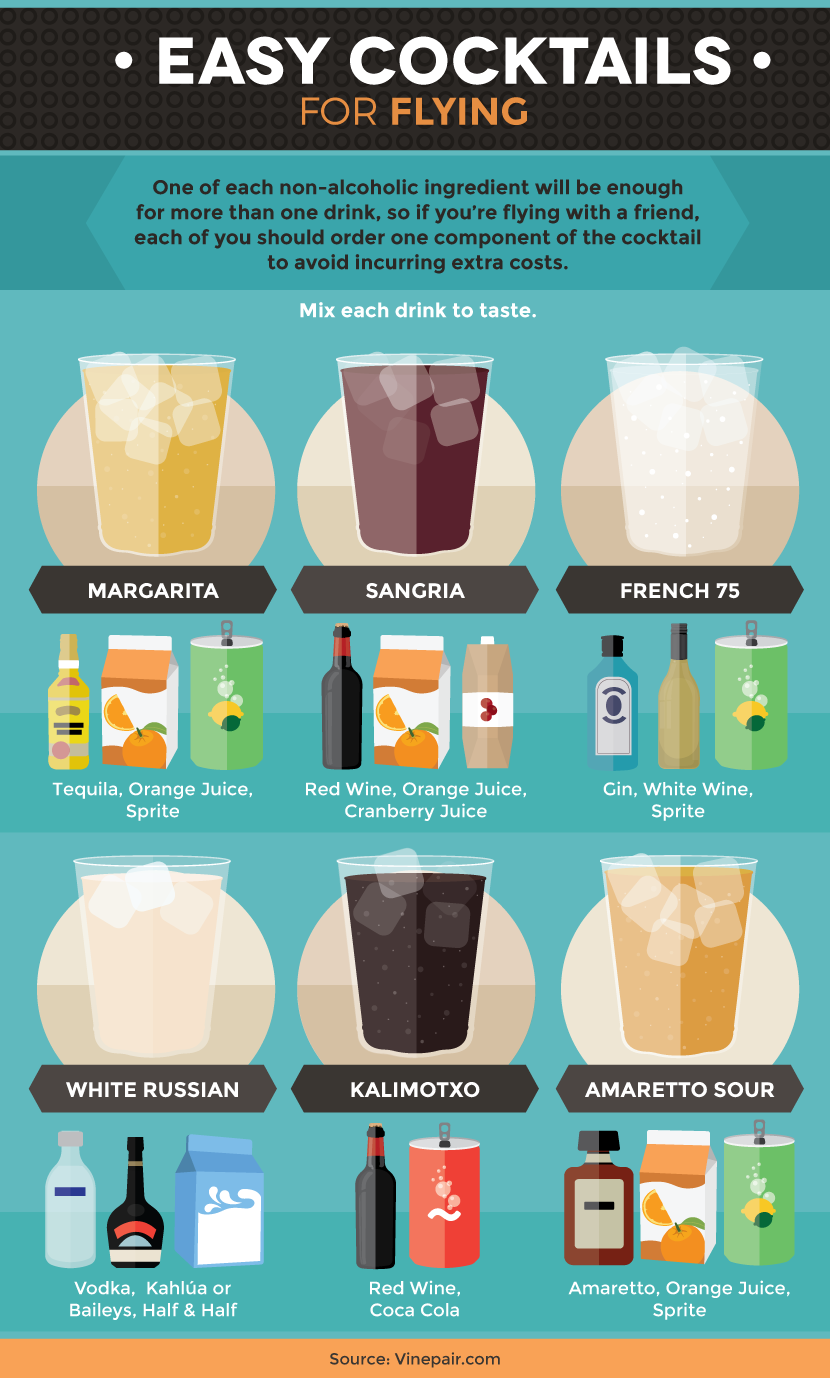Air Travel Tips
Let’s start with ways to find the best price on your next flight. Although passengers cannot control airfare costs, there are tried and true ways to better your odds for scoring that low fare.
Use the 24-hour cancellation rule. After booking, check the fare the next morning. If it’s gone down, take advantage of most airlines’ 24-hour cancellation rule and cancel and rebook the flight.
Book on a Tuesday; leave on a Wednesday. This golden rule of flight booking still applies! Make sure you sit down to do your actual booking on a Tuesday, and if possible, be flexible enough to fly on a Wednesday. At very least, go into the booking process with a two-day “window” for your departure and return dates to take advantage of airline website calendars, which show fare changes from day to day.
Like your favorite airlines on Facebook. Airlines often post their inside sales on their social media channels first. By becoming a fan, you reap the benefits of being the airline’s prime customer base. Airlines reward these loyal followers with flash sales.

Book two 1-way fares on different airlines. Many airlines offer incredibly low fares, going one way. Passengers then find high fares for the return flights. To avoid this issue, consider booking your inbound flight on a different airline than that of your outbound flight.
Book six weeks in advance. This time frame has been proven best for domestic flights. International flights should be booked four to six months in advance. Now that you’ve booked your flight, it’s time to ensure you get the seats you want. You do not need to leave this important aspect of your travel day up to chance!
Book early and select a seat at booking. If you book early enough, you should get your pick of window and aisle seats, without paying anything extra.
Ask an agent whether new seats have opened up at check in. Often, elite or frequent fliers book the best economy seats early on and then are bumped up to business or first class, leaving their prime economy seats empty at the last minute.
Flying solo at the last minute? Don’t pick your seat online. Instead, check in, but wait to select a seat assignment if the only seats remaining include undesirable middle seats. Airline agents are required to seat all checked-in passengers; as such, after all those middle seats are reluctantly claimed by other last-minute passengers, more appealing seats will be opened up toward the front of the plane, free of charge. This tactic is a gamble, but because you’re guaranteed a seat (provided you have checked in), you have nothing to lose.
Look for a seat in a row with one seat already taken. When selecting your seat online, avoid rows with all seats open. Instead, look for a window or aisle seat in a row with one seat already taken. That middle seat will be among the last chosen by passengers, increasing your odds of having some empty space in which to stretch out.
Beware picking your seat via a third-party site. If you book via a third-party website, note that their seat assignments don’t always make their way to the hosting airline’s computer system. We once booked tickets and chose seats on a cross-country flight months in advance only to scramble for a seat assignment at the airport. If possible, book directly through the airline website.
LUGGAGE STRATEGY
Almost as important as where you sit on the plane is where your luggage spends its time on the journey. There’s a science to figuring out when and how to get free checked luggage, starting during booking. Of course, you can travel on one of the few airlines still offering free checked bags (see illustration below), or you can be a card holder of an airline credit card. Most include a set number of free checked bags among their perks. If you’re willing to part with some extra cash, you can upgrade to a premium seat; first-class and business-class passengers enjoy “free” checked bags.
Finally, you can volunteer to check luggage at the gate. By far the easiest way to get free checked luggage in this era of air travel, it is only recommend to check luggage at the gate if and when you can be relatively certain that your flight will be departing without issue. If you gate check and then your flight is canceled (say, due to weather or mechanical problems), your gate-checked luggage will be stored with the rest of the checked bags, unavailable to you in most cases.
Carrying your bags on? Chances are that your flight is departing full and that the gate agents are asking for volunteers to check bags. If they don’t get enough volunteers, they’ll start checking at will. If you don’t want to be parted from your bag, here’s the best strategy to avoid it.
First, make sure you’re not an easy target for checked-bag assignment. Be within the carry-on requirements: usually one bag 22” or less and one personal item. Don’t have a jacket dangling from your arm, a shopping bag barely stuffed into a tote, or other borderline infractions that could draw the gate attendant’s ire.
Next, board as soon as you’re able. Queue up the minute your boarding group is called and get onboard as quickly as you can (without being a jerk). The passengers with bags that will be surrendered to the hold will be among the very last boarded. Once onboard, only try to stow one bag (your bigger one) in the overhead space. Be prepared to stow your purse, tote, or backpack under the seat in front of you. Earn karma points by helping those around you with their heavy bags, too.

AIRLINE ETIQUETTE: How to Be a Decent Person When Flying
We all have stories about rude air passengers. Don’t be that person! Here’s how:
How to excuse yourself from window seat: When you’ve got to go, you’ve got to go. And when you’re stuck in a middle or window seat, it can be awkward to ask to get out to use the restroom. However, everyone onboard understands that this is simply part of air travel (or should). To excuse yourself politely, tap the person seated in the aisle seat lightly with a soft “excuse me.” This should be enough. If not, speak in a louder voice. Be thoughtful about when you decide to ask (if possible). Don’t ask to exit your row directly before or during a mealtime or beverage service when the tray tables will be down and the passenger will need to juggle multiple containers and drink cups to let you out. The best time: right after a service, when the person is most likely to be awake and already in the process of tidying the area.
How to recline your seat without being a jerk: Instead of suddenly slamming your seat back, ease it into the position you want. This sounds obvious, but those airplane seat recline buttons are often old and clunky, making them difficult to use. Apply pressure softly at first, and if you find that you have to apply more pressure to get the seat to obey you, place one hand on the arm rest as you recline so you can control the speed. Although reclining your seat may be your God-given right, it doesn’t hurt to be polite about it. The person behind you might be in mid-sip of a cup of coffee or trying to open his or her laptop. If you’re seated directly in front of a parent with an infant on his or her lap, don’t recline your seat unless you medically need to. Just don’t.

When to put coats and small items in the overhead: A simple way to be a nice person on the plane is often overlooked. If you have a coat or small purse you’d like to stash in the overhead space, refrain from doing so until all other passengers have placed their bigger carry-on items inside. You’ll still have room, I promise, and this way, you don’t have to watch half a dozen strangers manhandling your stuff while trying to find room.
When disembarking the plane, go in row order. There’s no point in getting your stuff (or attempting to) from the overhead bin before the row in front of you has deplaned. If you’re trying to make a tight connection, God help you, because no one else will!
 This has been a guest blog post with thanks to Fix.com
This has been a guest blog post with thanks to Fix.com
